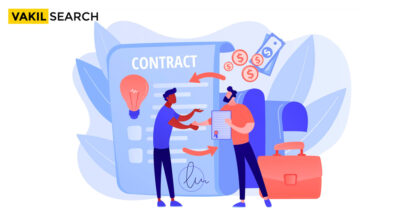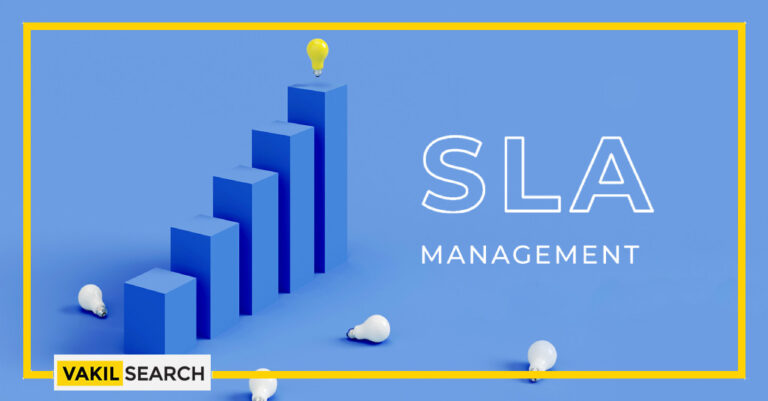Know the difference between Service level agreements Vs Key performance indicator. Know all the key points and advantages.
Service Level Agreement Vs Key Performance Indicator: An Overview
Most service providers thoroughly understand the requirements of service-level agreements with their customers and partners. However, the idea of creating a service-level agreement might scare people. People might get confused about where to start and what things you need to include. Read this article to understand SLAs better and when you should make them. To understand them better, you will also find a service level agreement in this article.
What Is a Service level agreement (SLA)?
An SLA, or service level agreement, is a carefully documented agreement between a customer and a service provider that clearly states the expected level of service and the services needed. The agreement differs significantly between industries, services, and vendors. However, the service level agreement should be carefully designed and examined before subscribing to an expensive IT service to realise the maximum service value from both a business and an end-user perspective. It is critical that service providers carefully examine the differences between customer-facing outcomes and internal outputs because these are critical for properly defining service expectations.
It is essentially a type of quality assurance. It states the quality of a supplier’s services to its customers, such as reliability, support, and availability. SLAs can empower a customer as they would know exactly what they can expect from a service provider. If the service provider chooses not to provide the services according to the quality described in the SLA, he can be held accountable for it. For instance, the supplier must respond within 15 minutes if there are any malfunctions, or the supplier should provide the service 95% of the time at least.
Which Services Are the Best for SLA?
There is no list from which you can conclude a service-level agreement. Therefore, a service level agreement can be created for all types of services. Hence, it is crucial to customise and tailor your service level agreement according to your service or company’s needs. You can look at the examples given below to understand for which services an SLA is suitable.
- Facility management
- Mail delivery
- IT
- Healthcare
- Surveillance
- Repair
- Help desk
In today’s world, since most companies are entirely dependent on ICT facilities, we observe that businesses primarily use service-level agreements in that sector. If you own a company, you probably wish to get back to working conditions as soon as possible if something happens to your IT systems, for example, in the case of a cyberattack.
Who Is the Provider of a Service Level Agreement?
Most service providers have a standard SLA, reflecting different service levels at various prices. However, it is important to review your service level agreement with legal counsel. When sending an RFP, the customer must indicate service levels in the request as this will influence supplier prices or offerings and may affect the supplier’s decision to reply.
What Are Service Levels, Rankings, and Priorities?
Service levels are generally described as the services a network service provider offers a customer for a predefined period of time. For example, in a call centre, the service level will carefully measure the percentage of calls an agent answers within a previously established time. It can also calculate the percentage of customers waiting for less than a previously determined time or the percentage of customers that don’t face a stock out. There are three service levels: the multi-level, internal, and customer service level agreements.
In SLAs, a specific ranking system is present that uses a specific ranking value to select one or more SLAs for a record. You can easily apply one or more SLAs to a record based on your particular configurations. You have to set these options at the site level. SLAs are ranked in the following method.
If you can apply for one SLA but more than one SLA matches a record, you can use the value in the ranking field to select a particular SLA. The matching SLA with the lowest value in the ranking field is applied. However, if you can apply for more than one SLA, all the matching SLAs can be applied for. The SLA used to measure the target dates is either the one with the highest ranking or the one with the most stringent timeframe. Your system administrator determines this setting.
Priority in a service level agreement is the attention or importance assigned to a specific ticket determined by the service level agreement. Usually, there are four major types of priority in a service level agreement: low, medium, high, and urgent. Urgent tickets are aptly named as they need urgent attention, and low tickets are not particularly important and can be dealt with later.
Service Level Agreement Vs Key Performance Indicator
A Service Level Agreement (SLA) and a Key Performance Indicator (KPI) are both important concepts in the field of business management. While they are related, there are significant differences between the two.
An SLA is a contract between a service provider and a customer that specifies the level of service that will be provided. It defines the scope of the services, the quality and quantity of the services, and the expected response time in case of any issues. The SLA ensures that both parties have a clear understanding of the expectations and responsibilities.
On the other hand, a KPI is a measurable value that indicates how well an organization is achieving its goals. KPIs are used to monitor and measure performance, and they provide a quantifiable metric to assess progress towards organizational objectives. For example, a KPI for a call center might be the average time taken to resolve a customer query.
While an SLA focuses on the quality and quantity of services to be provided, a KPI focuses on measuring the effectiveness of those services. SLAs define the expectations for service delivery, while KPIs measure how well those expectations are being met.
In essence, an SLA is a contract that sets expectations for service delivery, while a KPI is a measurement tool used to evaluate the performance of the service delivery.
Concluding Statements
In conclusion, both SLAs and KPIs are important tools in business management, but they serve different purposes. SLAs define the scope and quality of service delivery, while KPIs measure the effectiveness of that service delivery. It is important for organizations to understand the difference between these concepts and use them appropriately to achieve their goals.
Having an effective service level agreement is crucial to ensure efficient outsourcing engagements. The metrics used to manage and calculate performance against service level agreement commitments are essential to a successful agreement and important for long-term success. You must clearly understand SLA structures, as this would give you an advantage in ensuring that organisations deliver on their promises. Managing and creating service solutions is important as this will help you communicate with your customers. You should contact Vakilsearch to help you review your SLA agreement perfectly.
Read More:










